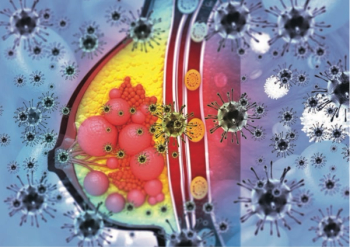
ESMO 2016: Fulvestrant Improves Survival in Advanced Breast Cancer
Fulvestrant (Faslodex) has demonstrated significant increases in progression-free survival in women with hormone receptor-positive advanced breast cancer.
Researchers presented evidence for a new standard of care for breast cancer during this year's European Society for Medical Oncology (ESMO) annual meeting, held October 7-11, 2016, in Copenhagen, Denmark.
Fulvestrant (Faslodex) has demonstrated significant increases in progression-free survival (PFS) in women with hormone receptor-positive advanced breast cancer, particularly those with less aggressive, lower volume disease. Fulvestrant is a selective estrogen receptor degrader that targets the function of hormone receptors--unlike the aromatase inhibitor anastrozole (Letrozole)--it does not interfere with estrogen levels.
The randomized, double-blind, multicenter phase III trial enrolled 462 women with inoperable locally-advanced or metastatic estrogen receptor (ER)-positive, HER-negative breast cancer, who had not received prior hormone therapy.
Half of the patients (n=230) were randomly selected to receive 500 mg intramuscular injections of fulvestrant (Days 0, 14, 28, then every 28 days), or 1 mg of anastrozole daily (n=232), and some also received one line of chemotherapy as needed. The primary endpoint was met; (PFS) with fulvestrant vs anastrozole (hazard ratio 0.797 [95% confidence interval 0.637, 0.999]; P = .0486; median PFS, 16.6 vs 13.8 months, respectively). During follow-up at 25 months the patients who were treated with fulvestrant experienced a 21% improvement in PFS compared to those treated with anastrozole. Of note, a subgroup analysis showed an even greater impact on PFS in patients whose disease had not spread to the liver or lungs at baseline (22.3 vs 13.8 months).
“For patients with non-visceral disease whose life isn’t immediately threatened by breast cancer – a group for whom physicians would typically choose endocrine therapy as a first approach – it looks like fulvestrant could be a new standard of care compared to anastrozole,”
This treatment is not without side effects, which may include joint pain (16.7% vs 10.3%) and hot flashes (11.4% vs 10.3%) for fulvestrant and anastrozole, respectively.
These statistically significant findings appear to be very promising for patients with advanced breast cancer who have not previously been treated for primary breast cancer, which may be a confounding factor, according to Nicholas Turner, MA, MRCP, PhD, team leader at the Institute of Cancer Research and Medical Oncologist at the Royal Marsden, London, England, suggesting that this line of treatment be used earlier in treatment.
Newsletter
Stay up to date on recent advances in the multidisciplinary approach to cancer.

















































































